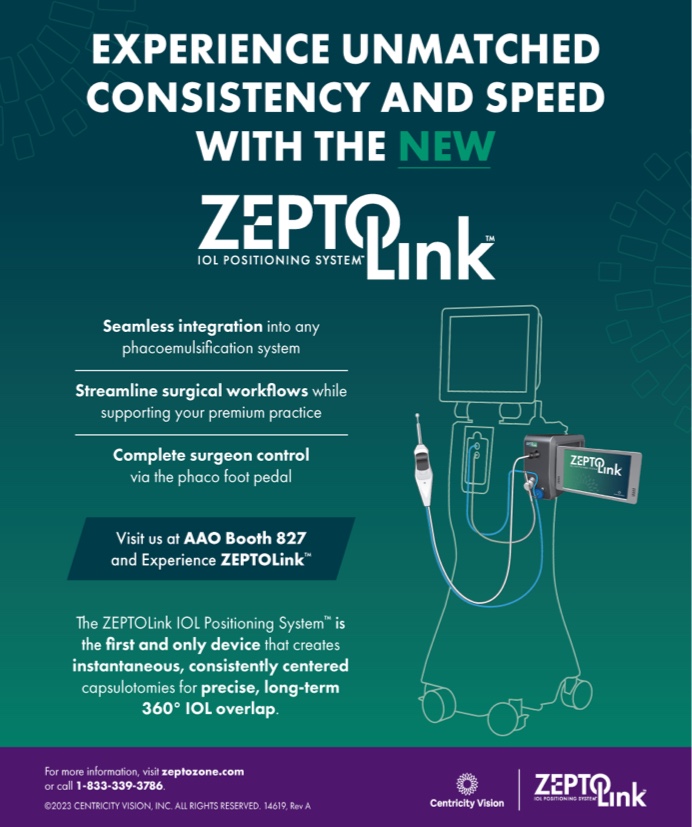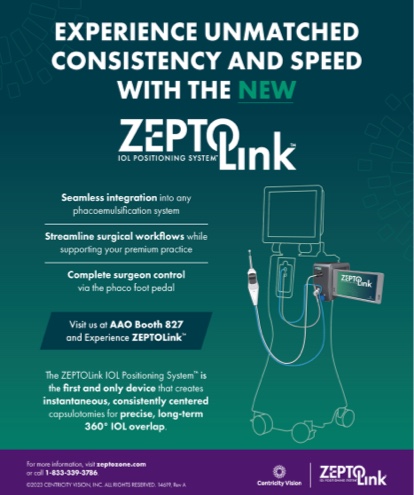Today, cataract patients are more aware than ever before of subtleties in their surgical outcomes, whether or not they are paying for premium technologies. Prolonged blurred vision, pain, and any adverse event—no matter how minor—influences how they judge their surgeon's skill. To satisfy patients, the ophthalmologist must understand their mind-set and prevent problems before they occur.
THE CLINICAL EXAMINATION AND PREOPERATIVE TESTING
The most important preoperative diagnostic tool is the clinical examination. Physicians' careful attention to detail during this assessment cannot be replaced by advanced testing. The clinical examination is when surgeons will detect the vast majority of diseases that could prevent them from achieving a desirable outcome.
Topography is essential to the preoperative workup. The test's utility extends beyond planning astigmatic correction to screening for disease. Not only does topography help to pinpoint where severe dry eye disease is disrupting the tear film (signaled by a dropout of information on this test), but it also reveals forme fruste keratoconus and other corneal disease that may not have been detectable on clinical examination. (For more on dry eye disease, see the article by Edward Lai, MD, and Christopher Starr, MD, on page 53.)
Optical coherence tomography will detect epiretinal membranes and macular edema that are not visible through a dense cataract and may affect nonsteroidal antiinflammatory drug (NSAID) therapy and IOL selection. Although an endothelial cell count may not be necessary if the clinical examination is thorough, the former can pick up subtle endothelial defects such as nonguttate corneal endothelial dystrophies.
Certainly, biometry and the measurement of axial length and corneal curvature are required for the selection of an IOL. Today, most clinicians use devices such as the IOLMaster (Carl Zeiss Meditec, Inc.) and Lenstar LS900 (Haag-Streit AG) for this purpose.
DRUG REGIMEN
Any disease that can interfere with preoperative testing should be treated before those measurements are taken. For example, ophthalmologists should address dry eye disease prior to biometry (Figure). To this end, I have affected patients complete 1 week of steroid treatment before biometry. I favor loteprednol etabonate ophthalmic gel 0.5% (Lotemax 0.5% Gel Drop; Bausch + Lomb) for this purpose, because I find the agent to be quickly restorative.
Generally, surgeons pretreat patients with an NSAID for 1 to 3 days prior to surgery to downregulate the inflammatory response to the cataract procedure. Preoperative treatment for a similar time period with a topical corticosteroid is also a reasonable measure. In addition, many ophthalmologists pretreat the eye with an antibiotic for 1 to 3 days to sterilize the ocular surface.
Perioperatively, a well-done prep by an experienced nurse is the best way to avoid contamination of the field. At the end of surgery, most surgeons instill an antibiotic. Many use dilute povidone-iodine (Betadine; The Purdue Frederick Company); I myself use a 5% solution. It is also reasonable to administer a steroid to reduce inflammation. Instilling an NSAID immediately postoperatively reduces incisional pain.
Postoperatively, my patients use an antibiotic q.i.d. for 1 week, an NSAID q.d. for 3 weeks, and a steroid q.i.d. for 4 weeks. In my experience, even the generic fluoroquinolones work well, but the safety and efficacy of generic NSAIDs and steroids can differ from that of brand-name agents. For that reason, I believe it is important for surgeons to become comfortable with a particular NSAID and steroid and to prescribe only those drugs. Consistent performance justifies the slightly greater cost to the patient.
CONCLUSION
An accurate diagnostic evaluation and effective pharmaceutical regimen are major components of successful cataract surgery. So, too, is the effective education of patients. When preoperative testing uncovers a potential problem, it is essential for the surgeon to communicate that finding to the patient, to explain how great a concern it is, to express confidence that the patient will be happy with the outcome, but also to note that the problem may introduce some imperfection. The discussion should then be documented in the chart. This behavior is simply treating the patient the way the ophthalmologist would want to be treated.
John A. Hovanesian, MD, is in private practice at Harvard Eye Associates in Laguna Beach, California, and he is a clinical instructor at the Jules Stein Eye Institute, University of California, Los Angeles. He is a consultant to Allergan, Inc., and to Bausch + Lomb. Dr. Hovanesian may be reached at (949) 951-2020; jhovanesian@harvardeye.com.


